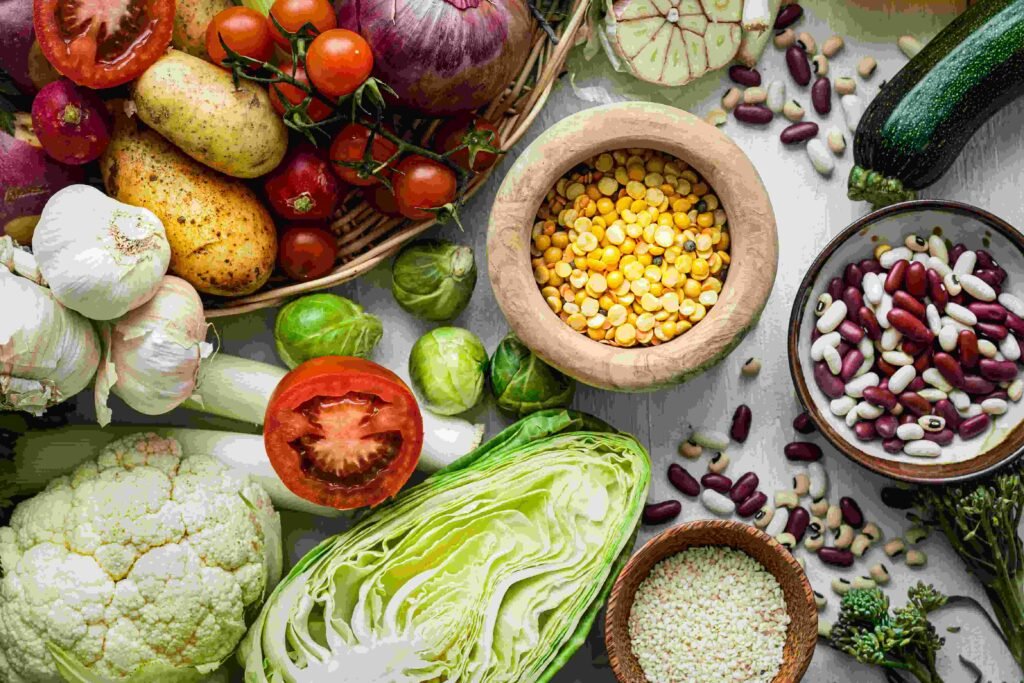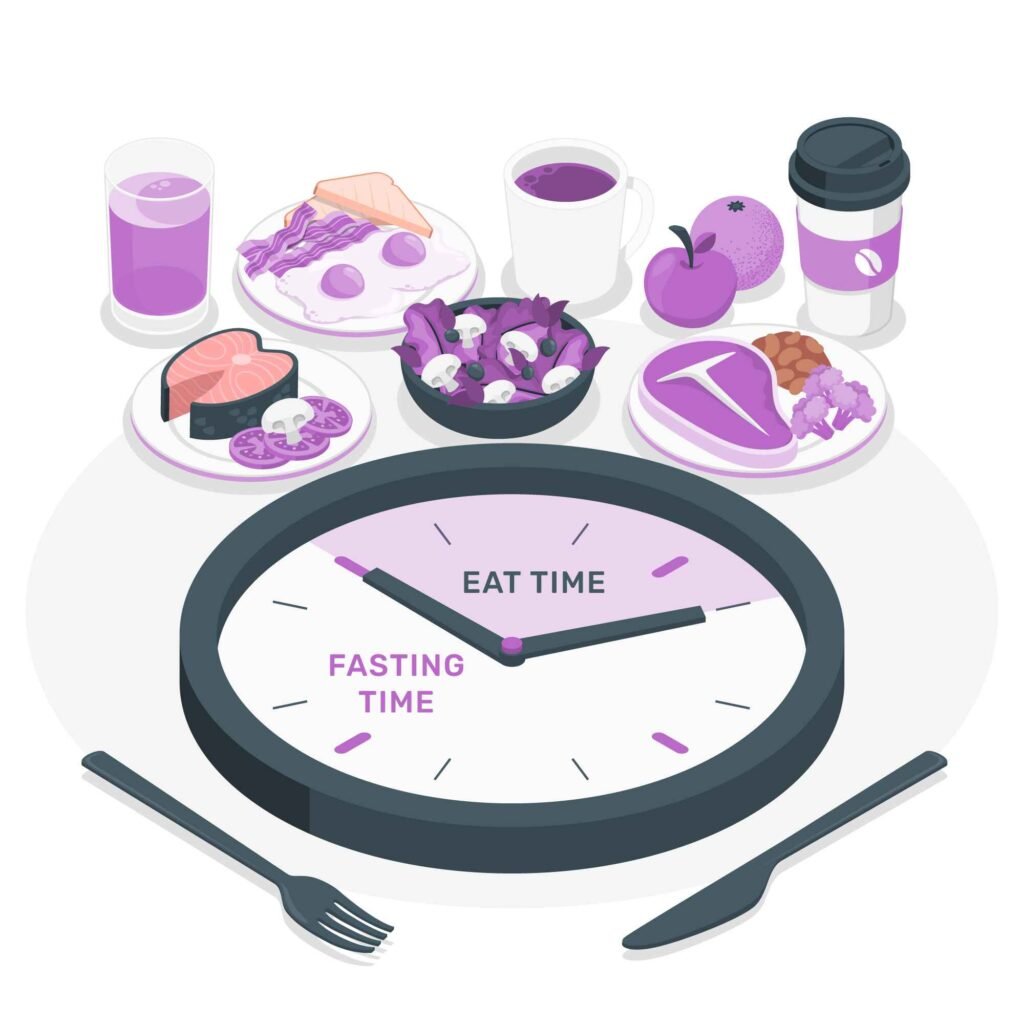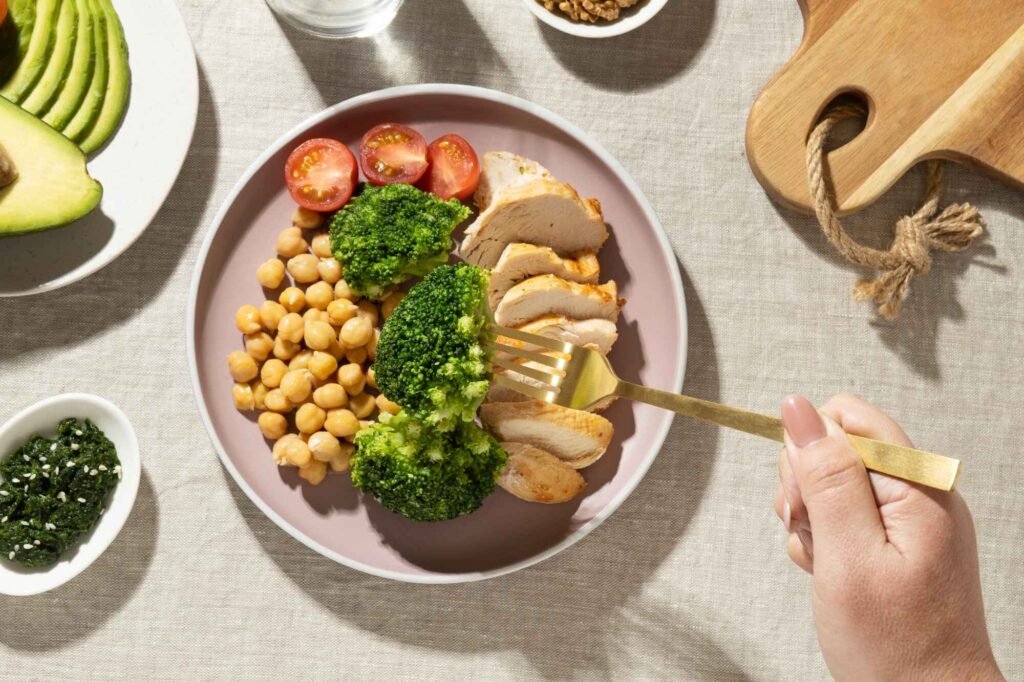
Exploring the Nordic Diet: A Regional Approach to Healthy Eating
What is the Nordic Diet?
The Nordic Diet is rooted in traditional Scandinavian eating habits, focusing on seasonal and nutrient-rich foods. Unlike fad diets, it is not restrictive but encourages a balanced approach to nutrition. The foundation of the Nordic Diet includes whole grains, fatty fish, root vegetables, berries, and plant-based oils.
Core Principles of the Nordic Diet
- Emphasis on Whole Foods
The Nordic Diet promotes minimally processed foods, ensuring the preservation of nutrients and flavor. This means avoiding refined sugars, additives, and preservatives commonly found in ultra-processed foods. - Locally Sourced and Seasonal Ingredients
Sustainability is a key aspect of the Nordic Diet. Eating locally sourced and seasonal foods not only supports the environment but also provides fresher and more nutritious meals. - Increased Plant-Based Consumption
While the diet includes fish and occasional lean meats, it prioritizes plant-based foods like legumes, vegetables, and whole grains. - Healthy Fats Over Saturated Fats
The Nordic Diet encourages using plant-based oils such as rapeseed (canola) oil, rich in omega-3 fatty acids, over butter or other saturated fats. - Low in Added Sugars
Natural sweetness from fruits like berries is preferred over added sugars, reducing the risk of chronic diseases such as diabetes and heart conditions.
Health Benefits of the Nordic Diet
Adopting the Nordic Diet comes with a range of health benefits backed by research:
- Supports Heart Health
The inclusion of fatty fish such as salmon, mackerel, and herring provides omega-3 fatty acids, which are essential for cardiovascular health. These healthy fats help reduce inflammation and lower bad cholesterol (LDL) levels. - Promotes Weight Management
High-fiber foods like oats, rye bread, and root vegetables keep you full longer, reducing unnecessary snacking. Studies suggest that people on the Nordic Diet often experience better weight control. - Boosts Gut Health
The diet’s emphasis on fermented foods like skyr and pickled vegetables improves digestion by promoting a healthy gut microbiome. - Reduces Risk of Chronic Diseases
The antioxidants in berries, combined with the anti-inflammatory properties of omega-3s and whole grains, help lower the risk of chronic illnesses, including diabetes and cancer. - Environmentally Friendly
By focusing on local and seasonal foods, the Nordic Diet significantly reduces the carbon footprint compared to diets reliant on imported goods or industrial farming.
Key Foods in the Nordic Diet
To incorporate the Nordic Diet into your lifestyle, focus on these staples:
- Whole Grains: Rye, barley, and oats form the backbone of the Nordic Diet, providing essential nutrients and fiber.
- Fatty Fish: Salmon, trout, and herring are rich in omega-3s, promoting brain and heart health.
- Root Vegetables: Potatoes, carrots, and turnips are versatile, nutrient-dense, and widely available.
- Berries: Blueberries, lingonberries, and cloudberries are packed with antioxidants that combat oxidative stress.
- Legumes: Beans, peas, and lentils offer plant-based protein and fiber.
- Fermented Dairy: Products like skyr and kefir support gut health with probiotics.
- Herbs and Spices: Dill, parsley, and juniper berries add flavor without the need for excess salt.
Practical Tips for Starting the Nordic Diet
- Shop Locally
Visit local farmers’ markets to find fresh, seasonal produce that aligns with the Nordic Diet. - Experiment with Recipes
Incorporate traditional Nordic recipes into your meal plans, such as rye bread sandwiches with smoked salmon or roasted root vegetable salads. - Focus on Simple Meals
The Nordic Diet doesn’t require elaborate cooking. A simple meal of grilled fish, steamed vegetables, and a slice of rye bread is both nutritious and satisfying.
Incorporating Sustainability into Your Diet
One of the standout aspects of the Nordic Diet is its commitment to sustainability. You can adopt this principle by:
- Reducing food waste through better meal planning.
- Choosing organic and eco-friendly options where possible.
- Growing your own herbs or small vegetables to minimize packaging waste.
How the Nordic Diet Differs from Other Diets
The Nordic Diet stands apart from other popular diets, like the Mediterranean Diet or Paleo Diet, due to its regional focus and unique food staples. Understanding these differences can help you decide if this eating pattern aligns with your goals.
- Focus on Northern Ingredients
While the Mediterranean Diet revolves around olive oil, tomatoes, and citrus fruits, the Nordic Diet leans heavily on rapeseed oil, root vegetables, and berries like lingonberries and cloudberries that are native to the Nordic region. - Higher Emphasis on Whole Grains
Rye bread, oats, and barley are consumed in larger quantities in the Nordic Diet compared to refined grains. This results in better blood sugar control and enhanced digestion. - Sustainability as a Core Principle
Unlike the Paleo Diet, which excludes grains and dairy, the Nordic Diet promotes a balanced intake of foods sourced locally, emphasizing environmental consciousness. - Less Reliance on Red Meat
While many diets, such as Keto or Atkins, incorporate significant amounts of meat, the Nordic Diet prioritizes fish and plant-based proteins, reducing saturated fat intake.
Tips for Meal Planning on the Nordic Diet
Creating a meal plan that aligns with the Nordic Diet can seem daunting at first, but with a few strategies, it becomes manageable and enjoyable.
- Breakfast
Start your day with a nutrient-packed meal like whole-grain rye bread topped with smoked salmon and dill or a bowl of oatmeal with fresh blueberries and a drizzle of honey. - Lunch
Prepare hearty soups or stews using root vegetables, beans, and barley. A side of fermented dairy like skyr adds a creamy, probiotic-rich element to your meal. - Dinner
Focus on lean proteins like baked cod or grilled mackerel served alongside roasted carrots, parsnips, and a green salad drizzled with rapeseed oil. - Snacks
Replace processed snacks with healthier alternatives like raw nuts, a handful of cloudberries, or a slice of rye crispbread with hummus. - Desserts
Keep it simple with treats like baked apples topped with a sprinkle of cinnamon or homemade berry compote served over skyr.
Incorporating Nordic Superfoods
The Nordic region is home to several nutrient-dense foods that are often referred to as “superfoods.” Including these in your diet can enhance both health and flavor.
- Lingonberries
These tangy berries are rich in antioxidants, vitamin C, and dietary fiber, supporting immune health and digestion. - Cloudberries
Known for their unique golden color, cloudberries are packed with vitamins and omega fatty acids, making them a powerful anti-inflammatory food. - Seaweed
Popular in coastal Nordic regions, seaweed is an excellent source of iodine, which supports thyroid health. - Rye
Rye bread provides complex carbohydrates, helping to regulate blood sugar and keep you energized throughout the day. - Herring
This fatty fish is a cornerstone of the Nordic Diet, offering high levels of omega-3s, essential for brain and heart health.
Addressing Common Misconceptions About the Nordic Diet
Despite its growing popularity, some misconceptions surround the Nordic Diet. Let’s debunk a few myths:
- Myth: The Nordic Diet is Expensive
Truth: While it emphasizes quality ingredients, the diet focuses on simple and locally sourced foods. Shopping at farmers’ markets and buying seasonal produce can help keep costs down. - Myth: It’s Only for People Living in Nordic Countries
Truth: The principles of the Nordic Diet, like eating whole grains and seasonal vegetables, can be adapted anywhere in the world. Substitute local equivalents for certain ingredients when necessary. - Myth: It’s Hard to Follow
Truth: The Nordic Diet is one of the least restrictive eating patterns, offering a wide variety of foods and flavors, making it easier to sustain in the long term.
The Nordic Diet and Its Role in Preventing Chronic Illnesses
Numerous studies highlight the role of the Nordic Diet in reducing the risk of chronic diseases. Here’s how it helps:
- Improves Heart Health
The omega-3 fatty acids from fish combined with the high fiber content of whole grains help lower blood pressure and reduce bad cholesterol levels. - Reduces Inflammation
The antioxidants in berries and the anti-inflammatory properties of rapeseed oil work together to combat inflammation, a key contributor to chronic illnesses. - Balances Blood Sugar Levels
Whole grains like rye and oats have a low glycemic index, helping to stabilize blood sugar levels and reduce the risk of type 2 diabetes. - Supports Brain Function
Fatty fish, rich in DHA, a type of omega-3, is essential for cognitive health and may reduce the risk of neurodegenerative diseases like Alzheimer’s.
Adapting the Nordic Diet for Modern Lifestyles
While the traditional Nordic Diet is deeply rooted in regional practices, modern adaptations make it more accessible. Here’s how you can adjust it to fit your lifestyle:
- Batch Cooking
Prepare soups, stews, and roasted vegetables in bulk to save time during the week. - On-the-Go Options
Pack portable snacks like rye crackers with cheese or containers of mixed berries for quick, healthy options during busy days. - Meal Delivery Services
Some services now offer Nordic Diet meal kits, making it easier for beginners to try recipes without sourcing all the ingredients individually. - Cultural Fusion
Blend Nordic principles with other cuisines to create innovative dishes. For instance, a salmon poke bowl with rye croutons and a Nordic-inspired dill dressing.
Why Sustainability Matters in the Nordic Diet
One of the standout features of the Nordic Diet is its commitment to sustainability. By eating local and seasonal foods, you can reduce your environmental footprint. This is particularly important in today’s context of climate change and global food shortages. Small steps, like reducing food waste and choosing eco-friendly packaging, align with the diet’s ethos and make a big impact.
The Nordic Lifestyle: More Than Just Food
The Nordic Diet is just one part of the larger Nordic lifestyle, which emphasizes balance, community, and connection with nature. Incorporating these elements into your daily routine can enhance your overall well-being. For example:
- Stay Active: Nordic countries encourage physical activity like hiking, cycling, and cross-country skiing.
- Value Social Connections: Sharing meals with family and friends fosters emotional health.
- Embrace Hygge: This Danish concept of coziness can be achieved by creating a warm and inviting atmosphere during mealtimes.
Recipes to Kickstart Your Nordic Diet Journey
To get started with the Nordic Diet, try incorporating these easy and delicious recipes into your weekly meal plan. Each dish reflects the core principles of the diet—simplicity, seasonality, and nutritional balance.
1. Nordic Salmon Bowl
A wholesome dish rich in omega-3 fatty acids, fiber, and antioxidants.
- Ingredients:
- 1 fillet of salmon (grilled or baked)
- 1 cup cooked barley
- A handful of mixed greens (spinach, arugula)
- 1/4 cup pickled red onions
- A drizzle of rapeseed oil
- Fresh dill for garnish
- Preparation:
- Cook the barley according to package instructions and let it cool.
- Arrange mixed greens in a bowl, top with barley, grilled salmon, and pickled onions.
- Drizzle with rapeseed oil and garnish with fresh dill.
2. Rye Bread and Herring Sandwich
A traditional open-faced sandwich perfect for a light lunch or snack.
- Ingredients:
- 2 slices of rye bread
- 4 pieces of pickled herring
- 1 boiled egg (sliced)
- A few slices of cucumber
- A sprinkle of chopped chives
- Preparation:
- Lay the rye bread slices on a plate.
- Top each slice with pickled herring, cucumber, and boiled egg slices.
- Sprinkle with chives for added flavor and serve.
3. Nordic Berry Parfait
A simple and healthy dessert option that highlights the antioxidant-rich berries of the region.
- Ingredients:
- 1 cup skyr or Greek yogurt
- 1/2 cup mixed berries (blueberries, lingonberries, raspberries)
- 1 tablespoon crushed walnuts
- A drizzle of honey
- Preparation:
- Layer the skyr and berries in a glass or bowl.
- Top with crushed walnuts and a drizzle of honey for natural sweetness.
Balancing the Nordic Diet with Modern Nutrition
While the Nordic Diet is highly nutritious, integrating modern nutritional insights can further enhance its benefits. Here’s how:
- Boost Protein Intake
While the diet provides moderate protein through fish, legumes, and dairy, athletes or active individuals may need to add more. Consider including plant-based protein powders or additional eggs and legumes. - Incorporate More Diversity
The Nordic Diet focuses on local ingredients, but expanding to other seasonal and sustainable foods from different regions can prevent monotony. - Mind Portion Sizes
Although the Nordic Diet promotes healthy eating, caloric intake should still align with individual energy needs. Use mindful eating practices to prevent overconsumption. - Monitor Sodium Levels
Pickled and fermented foods can be high in sodium. Balance them with fresh produce to avoid excessive salt intake.
Nordic Diet for Specific Lifestyles
The Nordic Diet can be adapted to meet various dietary needs and preferences:
- Vegetarian Nordic Diet
Replace fish with legumes, tofu, or plant-based alternatives. For example, substitute grilled salmon with a lentil and mushroom loaf. - Gluten-Free Adaptation
Opt for gluten-free grains like quinoa or gluten-free oats instead of traditional rye or barley. - For Busy Schedules
Prepare meals in advance or use quick-cooking ingredients like canned beans and frozen vegetables while adhering to the principles of the Nordic Diet. - For Families
Incorporate kid-friendly meals, like fish cakes or berry smoothies, to make the Nordic Diet enjoyable for all ages.
Real-Life Success Stories
Many individuals who have adopted the Nordic Diet report remarkable improvements in their overall health and well-being. Let’s explore a couple of examples:
- Improved Energy Levels
One enthusiast shared that replacing processed snacks with whole-grain rye bread and fermented dairy led to sustained energy throughout the day. - Weight Loss and Health Gains
Another individual credited the diet’s high fiber content and reliance on healthy fats for aiding their weight loss journey and improving their cholesterol levels.
These stories highlight the accessibility and effectiveness of the Nordic Diet when implemented with consistency.
Challenges of Adopting the Nordic Diet
No diet is without its challenges, and the Nordic Diet is no exception. Here are some common hurdles and ways to overcome them:
- Access to Ingredients
Some traditional Nordic ingredients, like lingonberries or cloudberries, may not be readily available in all regions. Substitute with similar local options, such as cranberries or blueberries. - Cost Concerns
Buying high-quality fish or organic produce can be expensive. Look for sales, buy in bulk, or choose frozen options to make the diet more affordable. - Time for Meal Prep
Preparing whole foods from scratch can be time-consuming. Use batch cooking and meal prep techniques to streamline the process. - Taste Preferences
If you’re not accustomed to pickled or fermented foods, it might take time to adjust. Introduce these flavors gradually to avoid overwhelming your palate.
The Nordic Diet and Its Cultural Impact
Beyond nutrition, the Nordic Diet reflects a broader cultural philosophy. It embodies a respect for nature, a commitment to sustainability, and an appreciation for simple, hearty meals shared with loved ones. Adopting this diet is not just a change in eating habits—it’s an opportunity to embrace a more mindful and balanced way of life.



